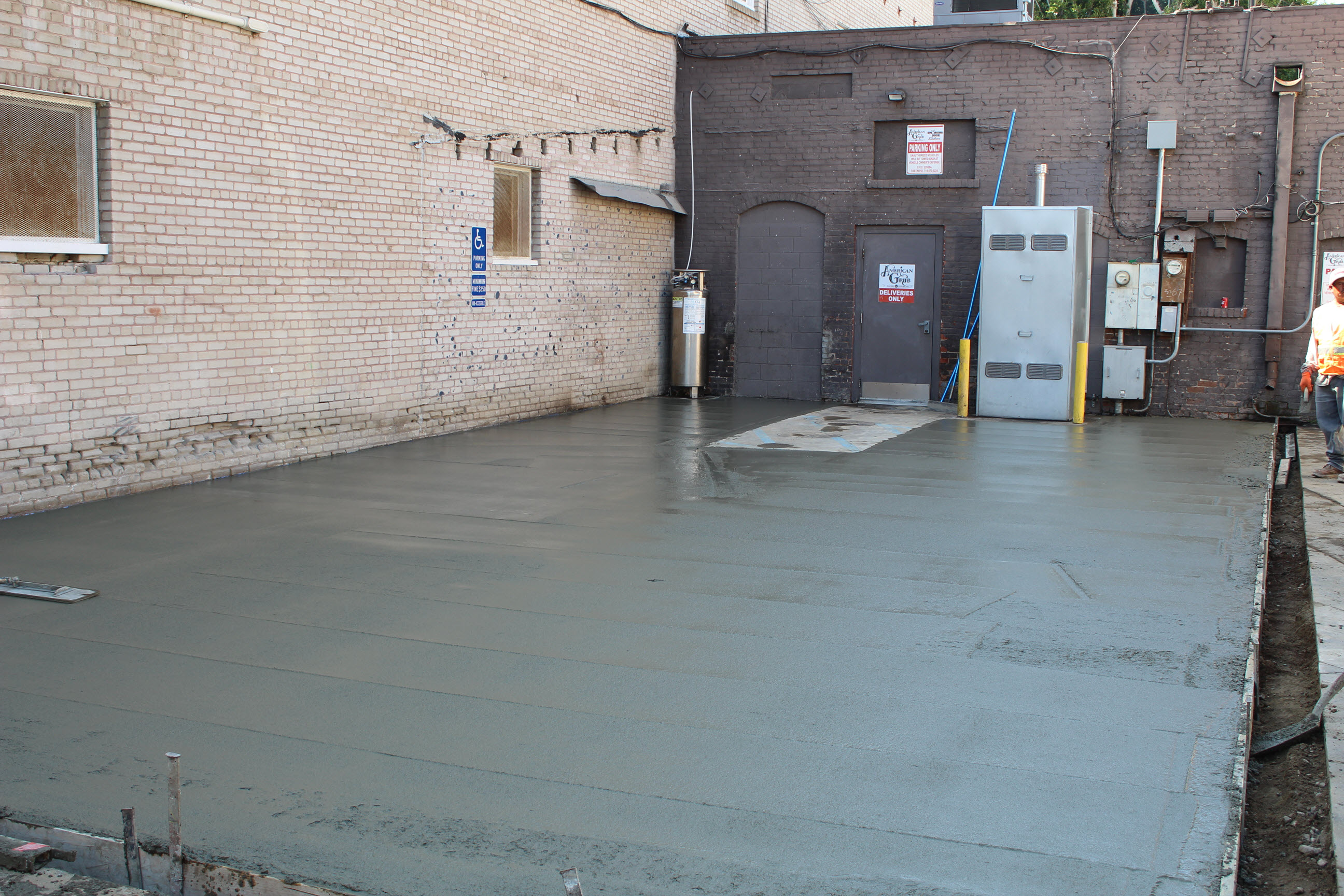Once a contractor pours your concrete, you'll be eager to get the area open again for foot traffic. It's important, though, to protect the new concrete while it's still curing. The better you care for it now in these beginning stages, the longer it will last and the better it will look for years to come. So when can you start walking on it? Here is a handy timeline so you know when your concrete is safe for pedestrian traffic.

Timeline for Protecting New Concrete
It's important to remember that the longer concrete sits, the stronger it gets. Concrete can cure after only a few hours, becoming strong enough to bear the weight of a human being. But it doesn't actually dry for up to a month here in hot and humid Southern California. Concrete doesn't reach its full strength until it's totally dry, too, so you need to continue to protect it during this time. While you won't notice the difference on the surface, if you rush the process, you could end up damaging the interior integrity of the concrete. That can reduce its life expectancy of about 50 years, meaning you'll be repairing or replacing that concrete sooner than you expected.
The good news is, you don't need to keep all foot traffic off of your new concrete for a month. In fact, the wait is much shorter than that, though you may need to take a few precautions in the meantime. Check the guide below for the best times to wait before opening up your new concrete paths.
After a Few Hours
New concrete will start to cure immediately and be hard enough to support some weight after just a few hours. That's why you'll see concrete workers standing on new concrete shortly after pouring it. This allows them to finish the concrete and apply sealants or decorations. However, the concrete is still in a fragile state at this point. That's because while the surface may look and feel dry, it's still wet below the surface. You can still mark the concrete if you aren't careful. The average person should not walk on the concrete at this point.
After 24 Hours
After 24 hours, you can safely walk on your new concrete. This is the minimum amount of time you should wait for the concrete to harden here in Southern California. If there has been a lot of rain or you've done decorative stamping in the concrete, you should wait longer. Normal foot traffic should be fine on standard concrete at this point, but you should still be cautious about damaging the surface of the new paths. Prohibit the use of these items on the new concrete, if you can:
- Pets. Dog claws can scratch the surface of the concrete at this point. While it won't interfere with the integrity of the concrete, it will mar the look of it.
- Skateboards, bikes, and strollers. The smaller wheels on these items concentrate their weight on a small area. That can leave grooves in the concrete as they move over the surface.
Be sure to avoid any kind of twisting motion or dragging anything on the surface, too. This includes trashcans or plant containers. This motion can create marks on the concrete that aren't easy to fix.
After a Week
After a week, you can safely allow most forms of traffic on your new concrete without worrying that it will mark the surface. It's even safe for vehicles to drive on concrete after a week. Larger vehicles, like trucks and semis, should wait longer. While the concrete will still be drying below the surface, you won't notice any difference in its performance or appearance from here on out.
After a Month
It takes concrete about 28 days to fully cure and dry. At this point, it has reached its maximum strength. If you've taken good care of your new concrete up to this point, you can expect it to last for about 50 years before you'll need to think about replacing it again.
Can I Speed Up the Dry Time for My New Concrete?
24 hours can feel like a long time to wait for concrete to dry, especially if it is in a busy commercial or industrial area. Some customers may be eager to speed up the drying time of their new concrete, so they can get foot traffic moving again sooner. While this is understandable, be cautious about speeding up the drying time. You may end up doing more damage to the concrete than you realize.
Concrete is best when it's allowed to dry slowly over time. This increases its structural integrity. A slower drying process makes the concrete stronger and reduces the chances that it will suffer from large cracks later on. In fact, it's recommended that you keep the concrete wet or covered for the first week to slow down the drying process. Contractors refer to this as "moist curing." However, if you are eager to start walking on your new concrete, there are some things that help speed up the process.
If you need to get your sidewalk open as soon as possible, talk to an experienced Southern California concrete contractor. They'll be able to advise you on different concrete mixes that respond well to faster curing. This could help shave time off of the drying process and allow you to get light foot traffic moving again sooner without compromising the integrity of your new concrete.
Need Help With Your Concrete Paths and Sidewalks?
If you need concrete poured for your next new project, talk to the Empire Parking Lot Services team. We've spent more than a decade building a reputation as Southern California's preferred concrete contractor. We'll help you find the right concrete mix for your project and exceed your expectations for excellence. Our team is friendly, professional, and knowledgeable about all your concrete and parking lot needs. Contact our concrete team today at 714-633-0300 to have our experienced concrete division assist you with your next concrete-related project.




Comments